Somehow, inexplicably, we’re already halfway through February and I’m a little late with my monthly newsletter. It’s been a busy few weeks and as well as lots of joyous jaunts with delightful folk in and around Rome I also recently made forays to the bay of Naples.
My archeologist pal Dr Sophie Hay put me up at her place in the modern town of Pompei and kept me up to speed on newly reopened houses and current excavations so I could do some exploring in preparation for some specially requested tours at Pompeii.
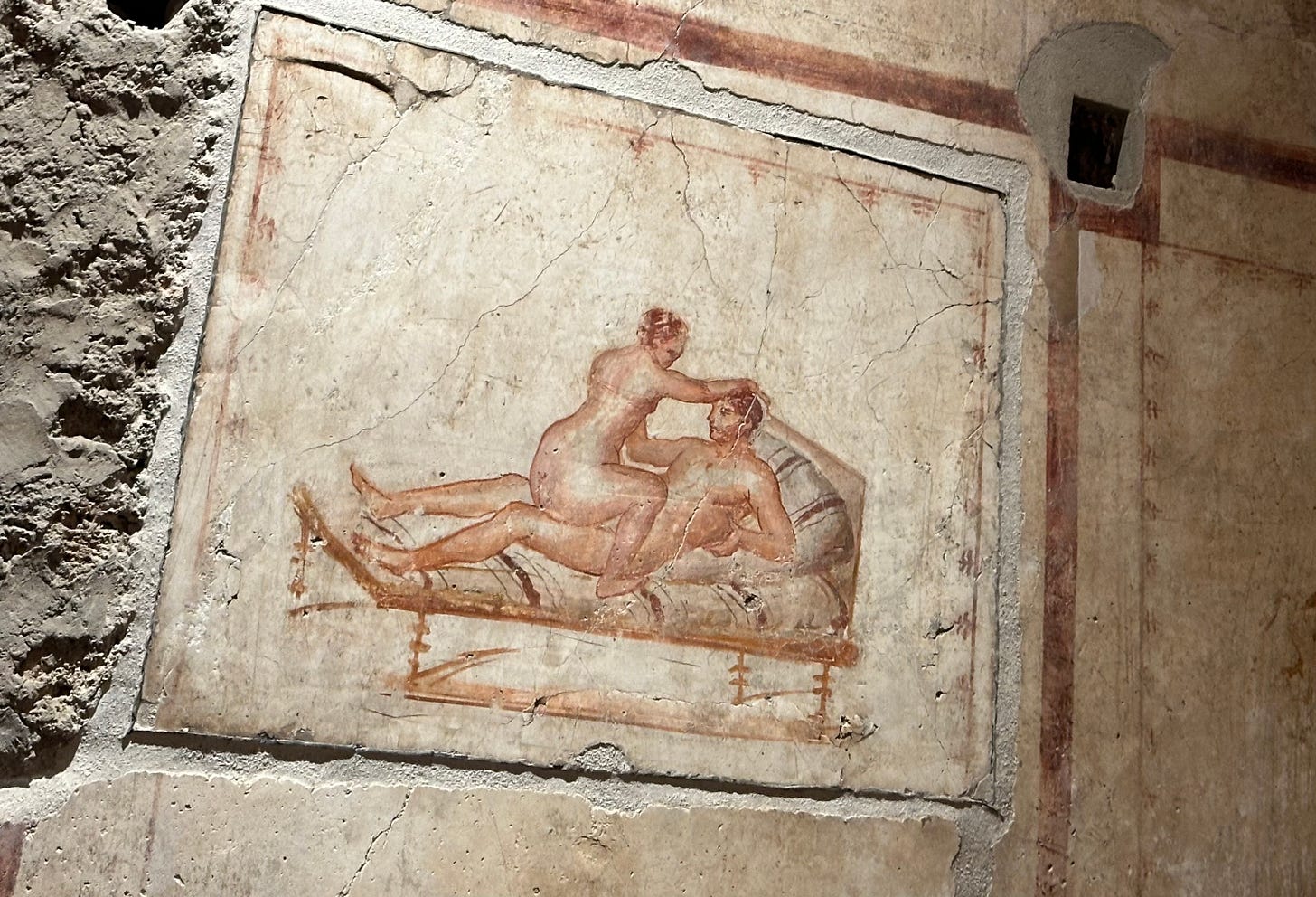
Among the ongoing excavations, I was delighted to visit the complex currently being uncovered in the area now called Regio IX. Houses dating to the third and second centuries BCE (indicated by the rough stone construction of the Samnite period) were subsequently remodelled on the cusp of the first century CE (by which time Pompeii was vehemently Roman). The earlier houses became a residential building sandwiched between two businesses run by the same family: a laundry and a bakery.
When the volcanic eruption of 79CE abruptly brought the bustling town of Pompeii to its dramatic end this complex was undergoing renovations. Building work was abandoned as the ominous clouds of dust began to fall, and much of the city’s population—estimated at perhaps 12,000—fled taking all of value that could be carried.
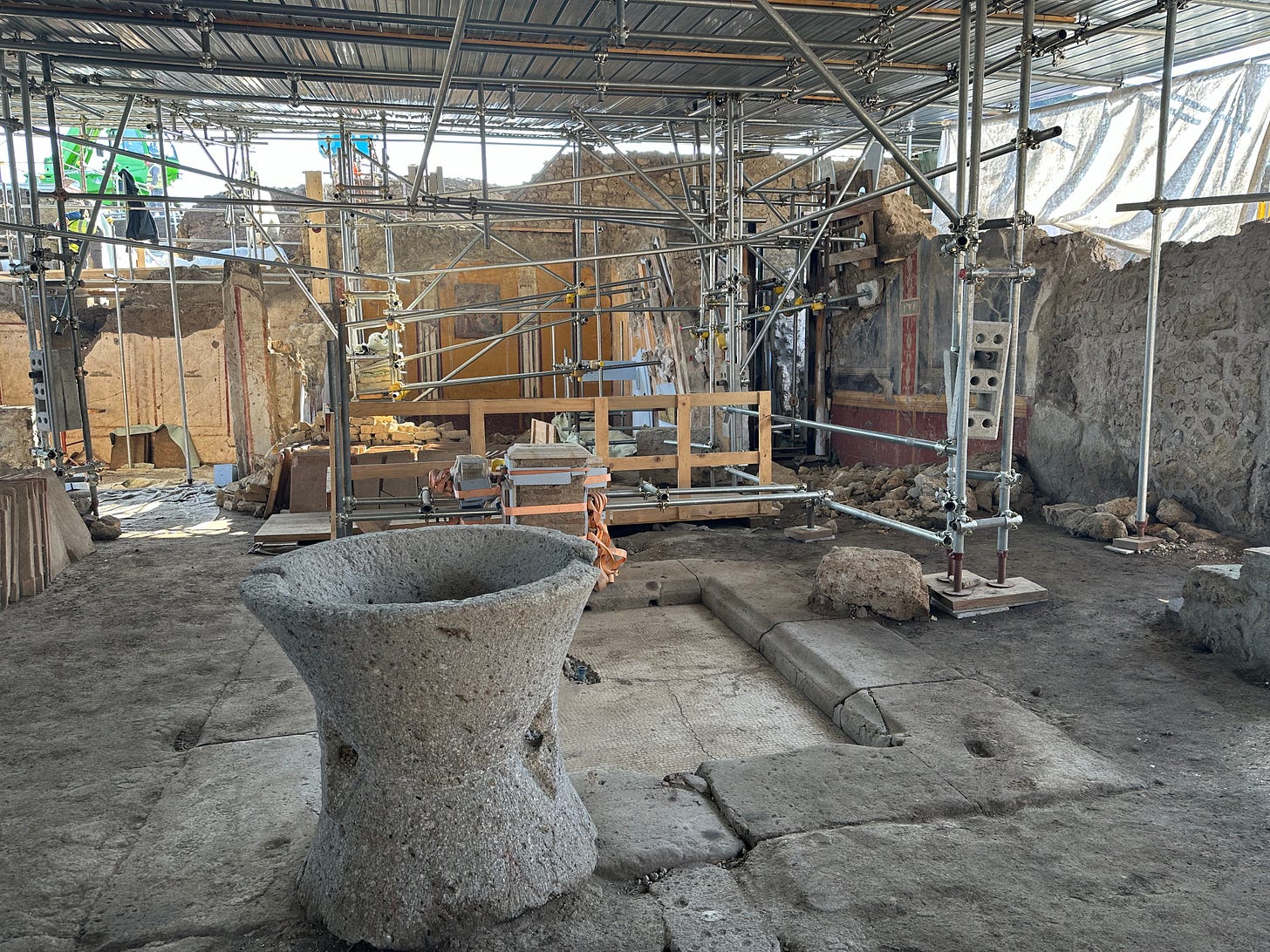
The building site of this prosperous complex, testament to the Roman spirit of free enterprise, is being painstakingly excavated to very different criteria than those employed in the first excavations of the eighteenth and nineteenth centuries. Then the focus was especially on paintings and sculptures, and objects of little or no intrinsic value were often swept away.
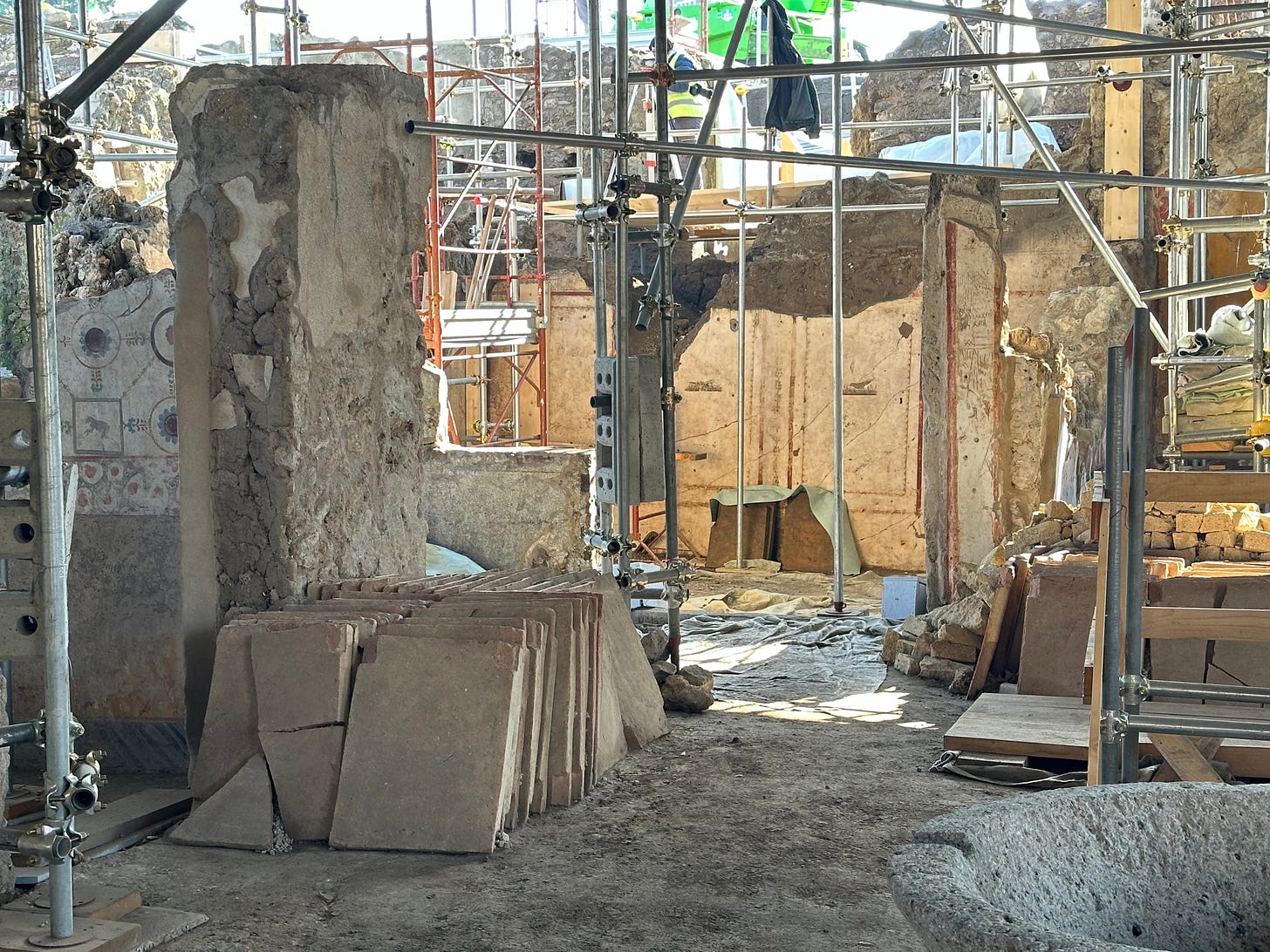
However the current careful excavations show extraordinary snapshots of a work in progress: by the atrium brand new and carefully stacked tiles await a roof that was never to be built; piles of mortar and dry plaster are still in the shapes of the sacks which once held them, and which have long since disintegrated.
In this same space a fresco—simultaneously brand new and almost two thousand years old—shows a flatbread among other things on a dish of food and in the canny interests of publicity described by the Archeological Park upon its discovery last summer as the “first pizza” recreated here by my chum Rachel Roddy for the Guardian (there’s also a better photo in the article). It is a reminder that Roman cities, just like our own, were never finished. They were instead in a constant state of flux; a restless programme of new constructions and of renovations of which we have testament, right across the Bay of Naples, because this relentless search for improvement and growth—so very human—was halted by a natural disaster on a scale of which the contractors and their patrons alike could have had no inkling. I find that very moving indeed.
Saluti from Rome,
Agnes





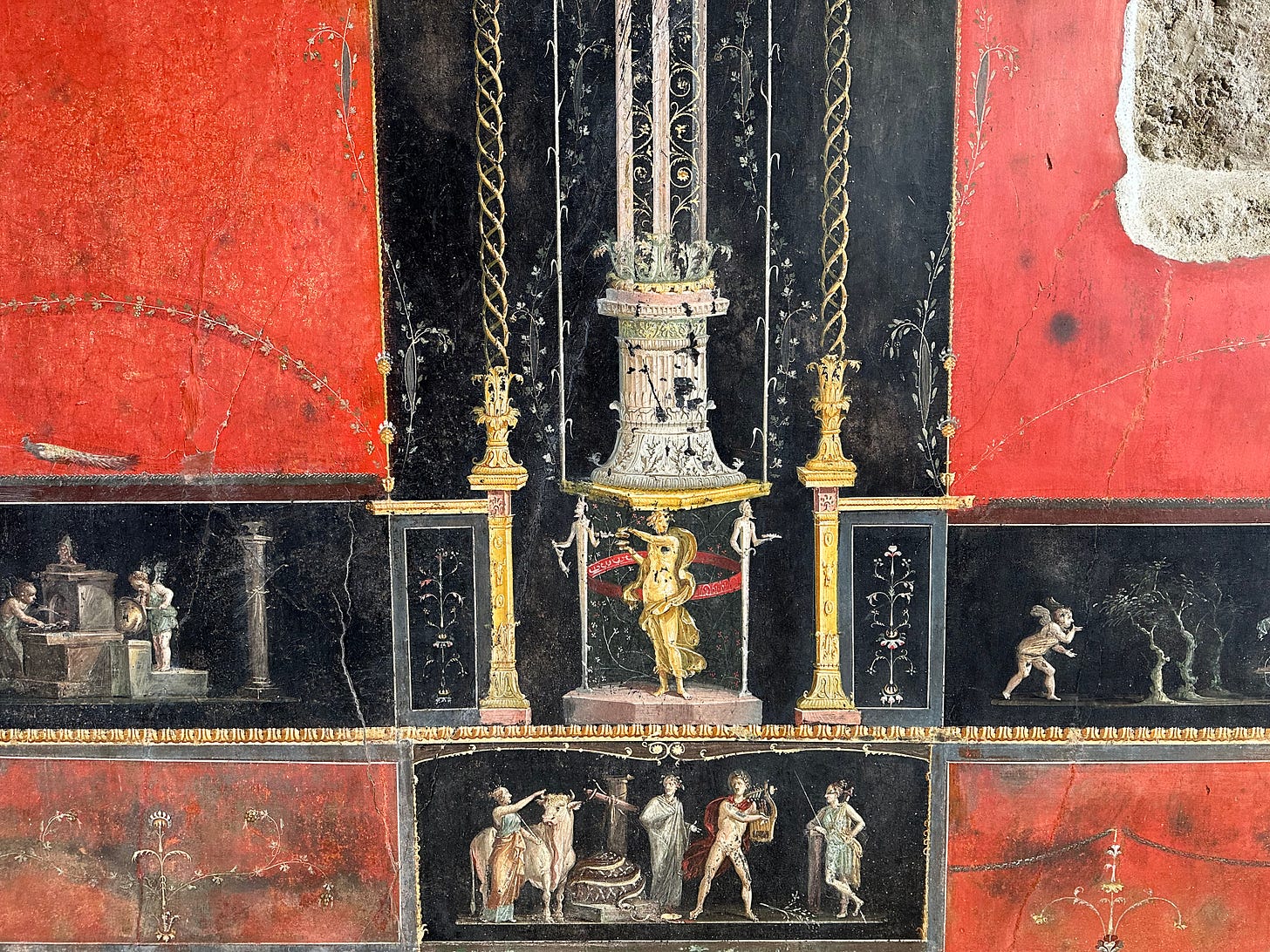
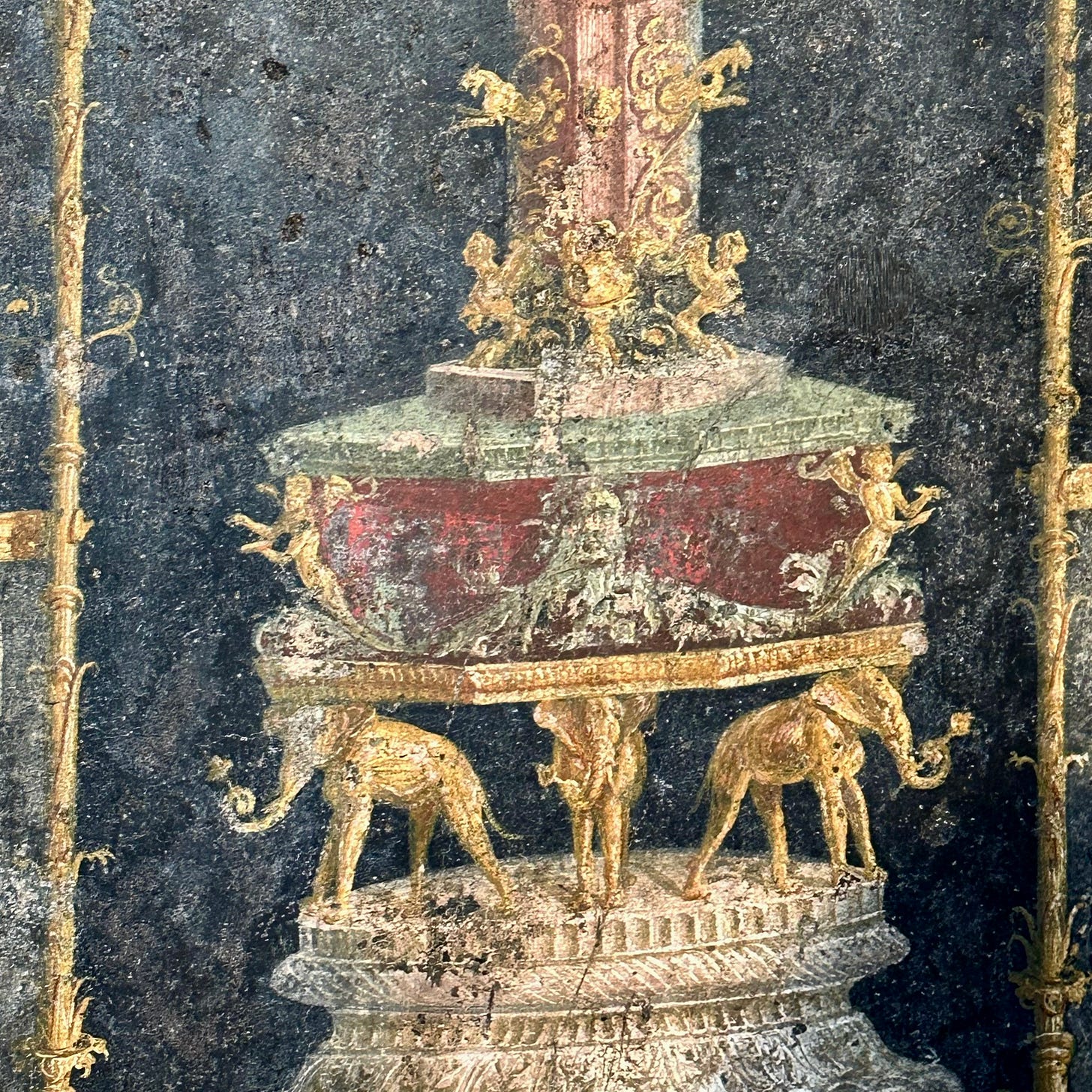
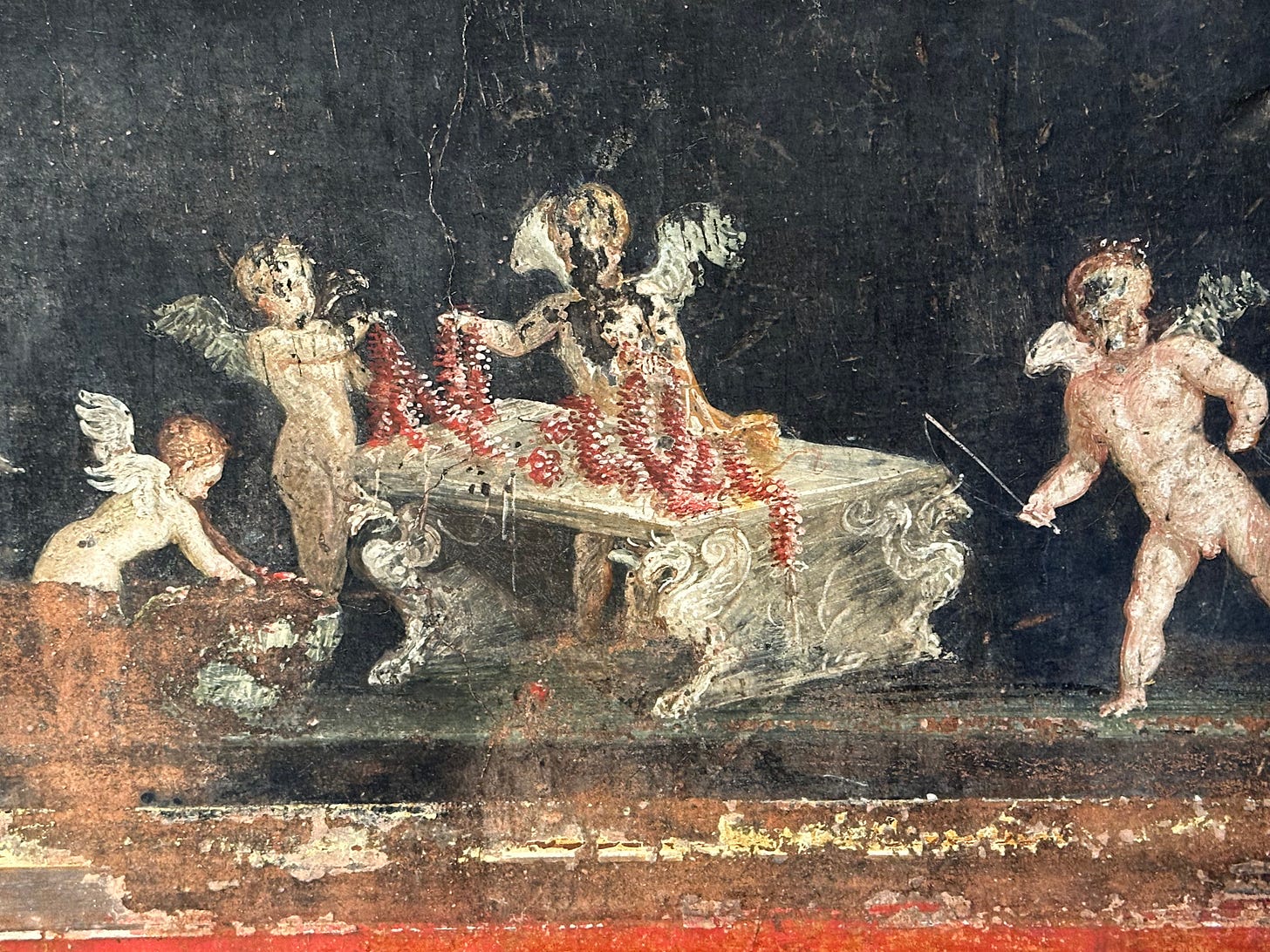
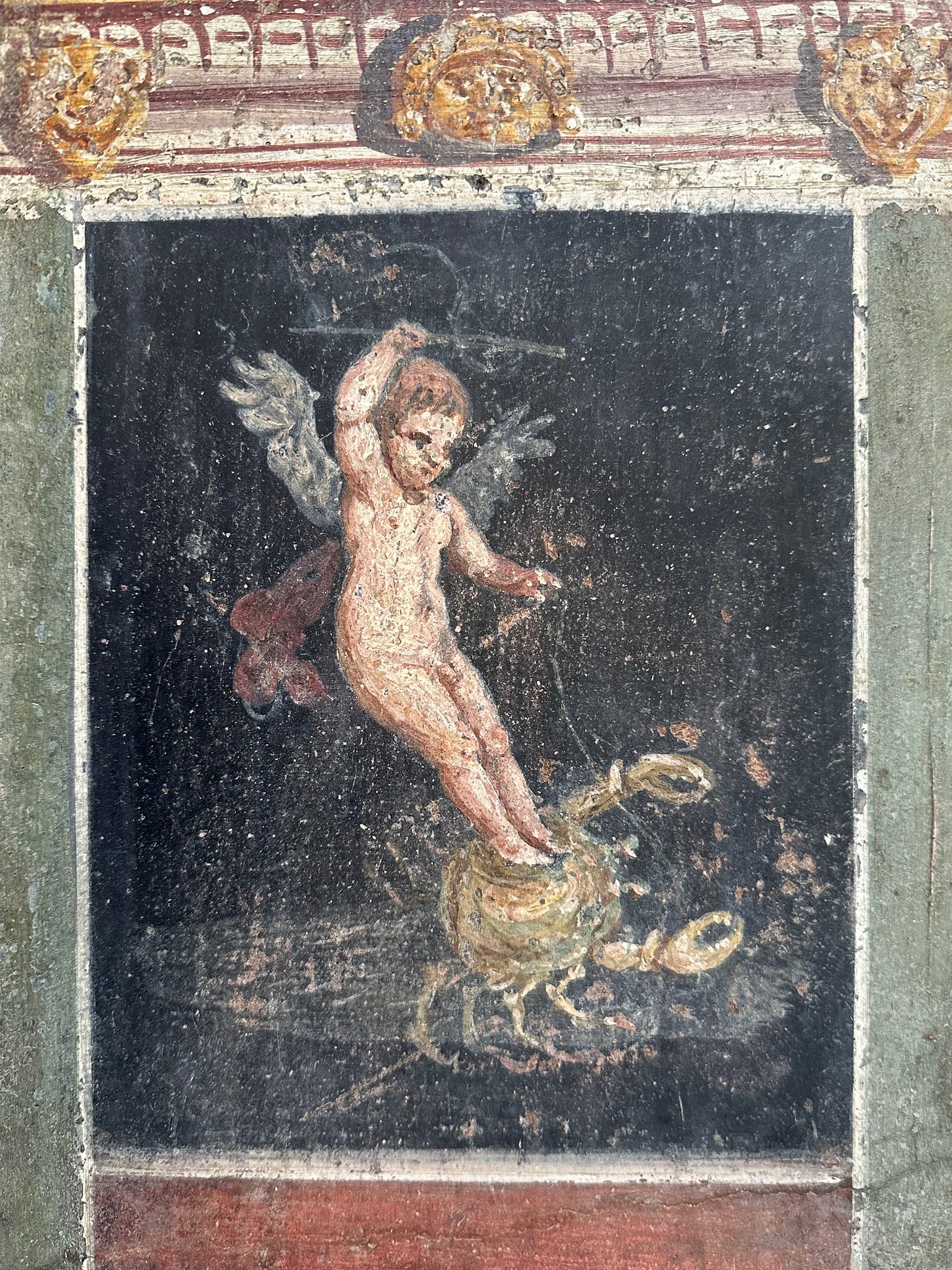
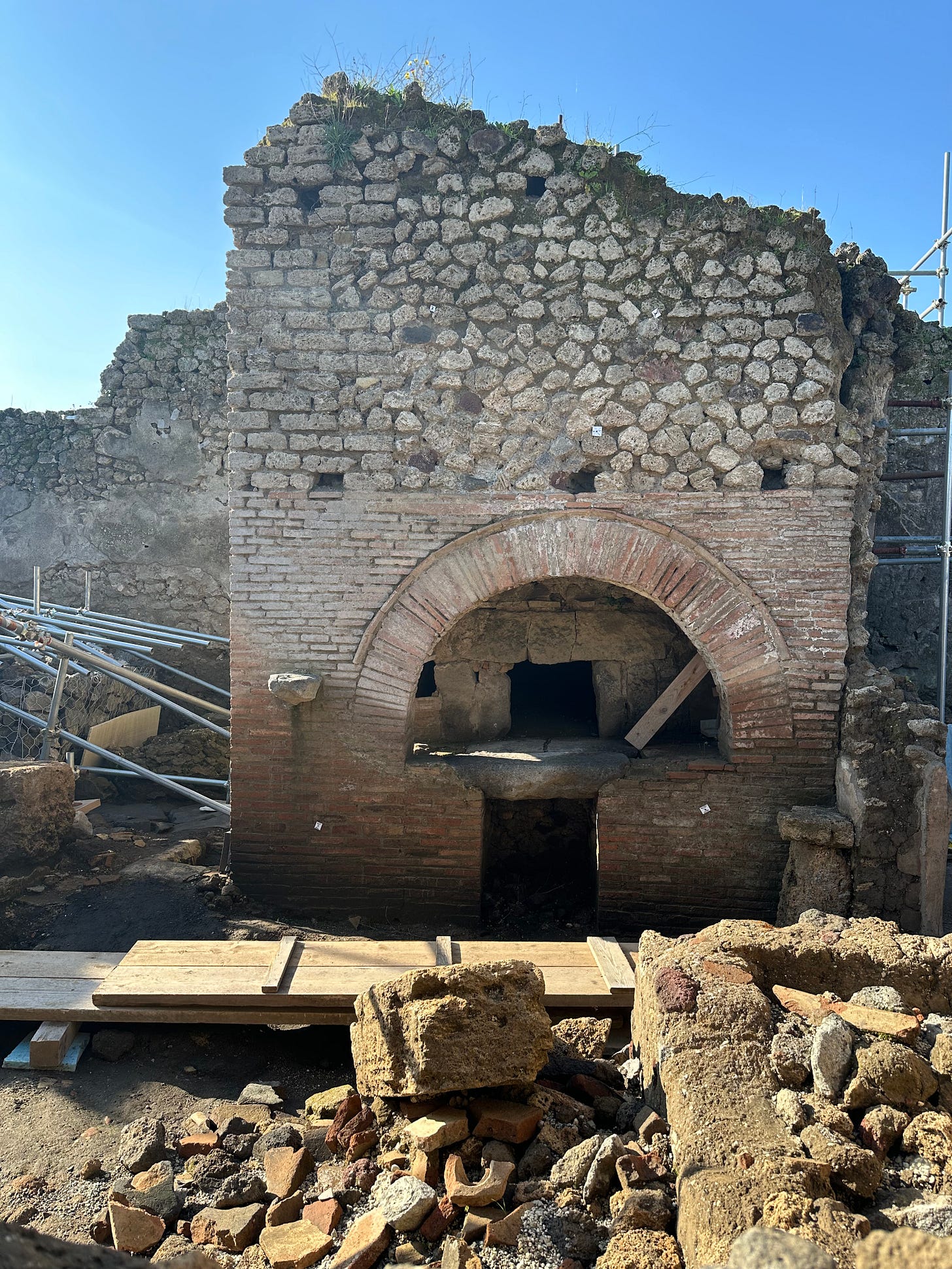

Interesting … as always. Thankyou Agnes
J